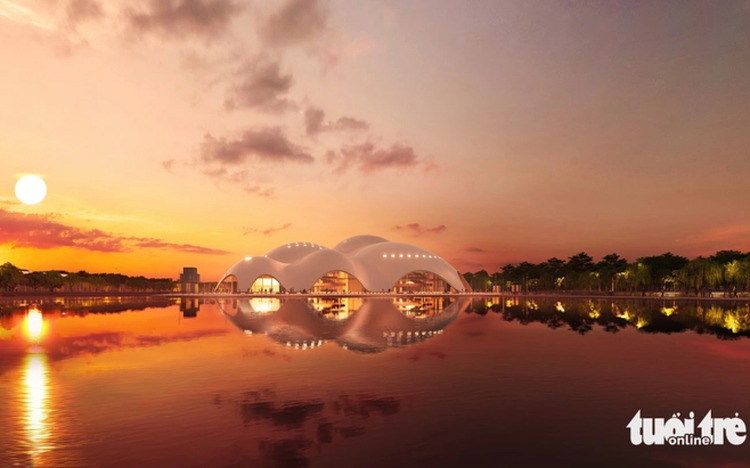
An artist’s impression of the Hanoi Opera House, also known as the Pearl Opera House.
The Hanoi Opera House and the themed cultural park are a key project in a cluster of initiatives celebrating the 71st anniversary of the liberation of the capital (October 10, 1954 – October 10, 2025).
Speaking at the ceremony, Duong Duc Tuan, vice-chairman of the Hanoi People's Committee, emphasized that the project is aimed at serving the community, non-profit, and funded through private resources—a rare model globally, as most major opera houses are government-funded or state-sponsored.
"Hanoi is committed to creating the most favorable conditions, closely cooperating and providing full support to ensure the project is implemented on schedule, with quality and safety," Tuan stated.
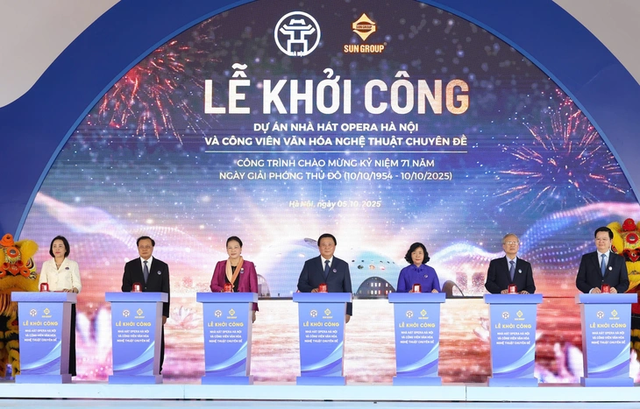
Delegates make a symbolic gesture to break ground on the Hanoi Opera House and the themed cultural and artistic park in Hanoi. Photo: Xuan Hai
Nguyen Xuan Thang, a Politburo member, president of the Ho Chi Minh National Academy of Politics, and chairman of the Central Theory Council, said the project, once completed, would serve as a venue for world-renowned art troupes.
At the same time, it will help spread and showcase Vietnam's traditional cultural values and artistic talents to the world.
"We have high hopes for this project. It lays the foundation for the development of more opera houses and modern cultural works, so that Hanoi can truly be a capital of heritage, a beautiful green modern capital of global stature," Thang noted.
“I also hope that since the opera house is located in the Quang An Peninsula, the surrounding road infrastructure must be completed, so that when the opera house opens, all related facilities are ready for public use.
"Only then can people fully enjoy the values the opera house brings."
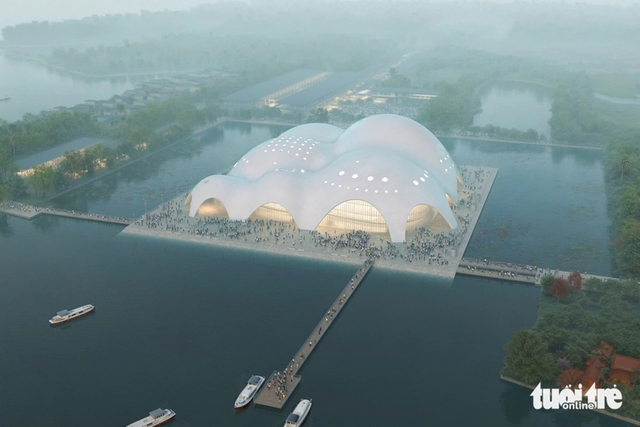
An artist’s impression of the Hanoi Opera House
The project is funded by Sun Group, with a total investment of nearly VND12.8 trillion (US$483.4 million).
It spans approximately 191,000 square meters in the heart of the Quang An Peninsula and will host major cultural and political events of the capital.
The themed cultural and artistic park will meet public needs for creativity, enjoyment, and recreation, serving as a tourism highlight for both domestic and international visitors.
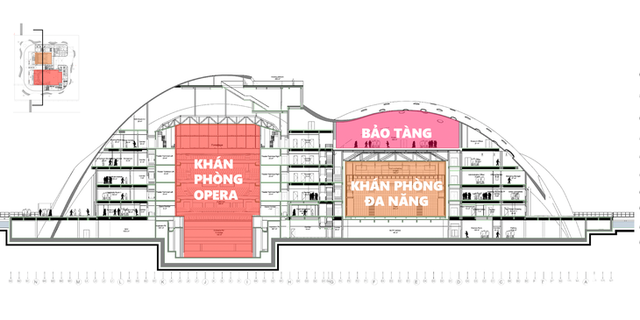
The cross-sectional model of the Hanoi Opera House
The Hanoi Opera House is designed by renowned Italian architect Renzo Piano.
It features two main performance halls: an opera hall with a seating capacity of 1,797 and a multipurpose hall equipped with modular, removable seating that can be rearranged to host standing-room events such as concerts and live music, accommodating about 1,430 standing guests and 216 seated on a balcony.
Beyond the main halls, the complex includes multifunctional spaces such as a main lobby, rehearsal and training rooms, a museum, and a scenic viewing platform.
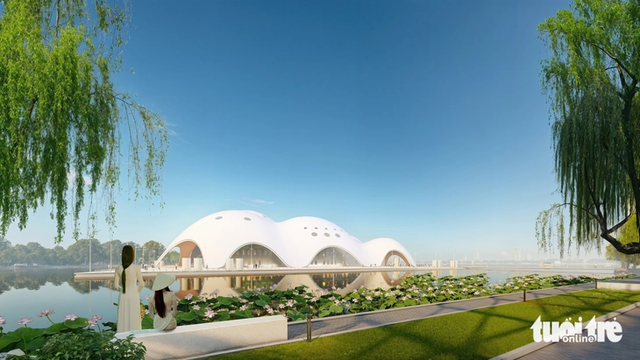
The Hanoi Opera House has a total investment of nearly VND12.8 trillion ($483.4 million) and covers a land area of approximately 191,000 square meters.
Upon completion, the opera house is expected to host a wide range of art forms including symphonic music, opera, ballet, Broadway musicals, galas, award shows, and large-scale entertainment events.
It will also serve as a modern cultural and entertainment hub for the public.
A signature architectural feature of the opera house is its dome, inspired by the rippling waves of West Lake.
The dome boasts a super-thin, high-strength structure and is coated with materials that create a mother-of-pearl effect, reflecting the lake’s hues throughout the day.
Surrounding water bodies, such as the lotus pond at Pho Linh Pagoda and Thuy Su Lake, will be cleaned, restored, and planted with West Lake lotus flowers to align with the aesthetic of the cultural park.
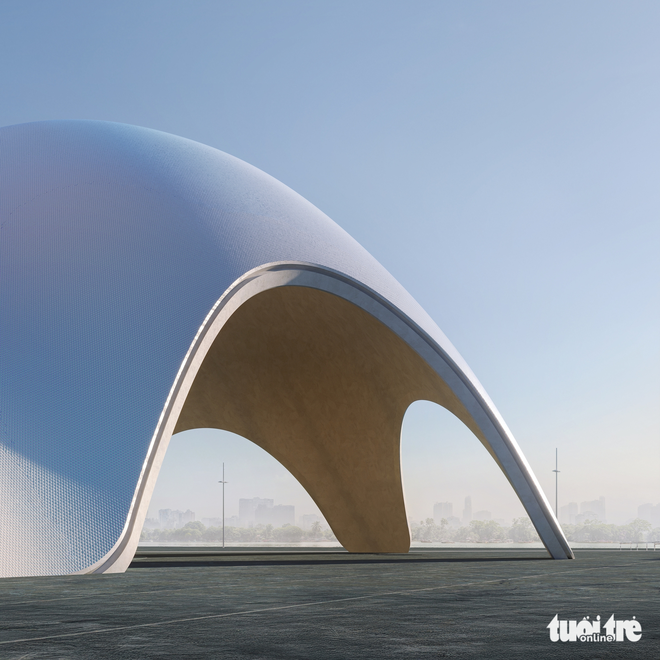
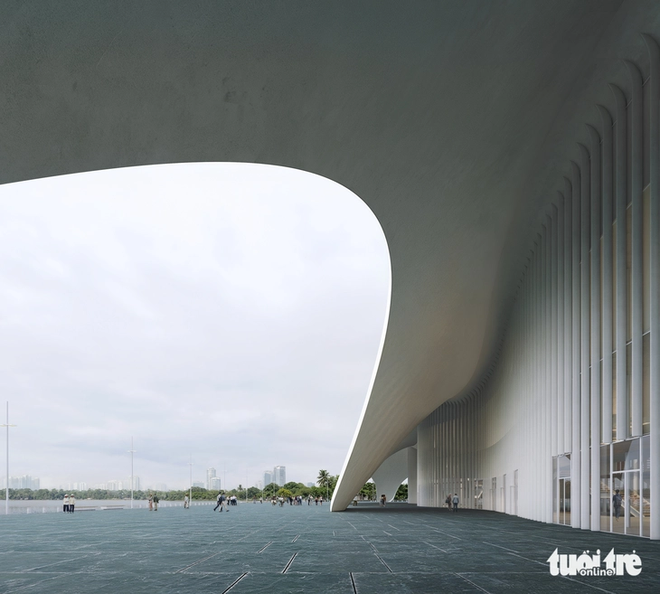
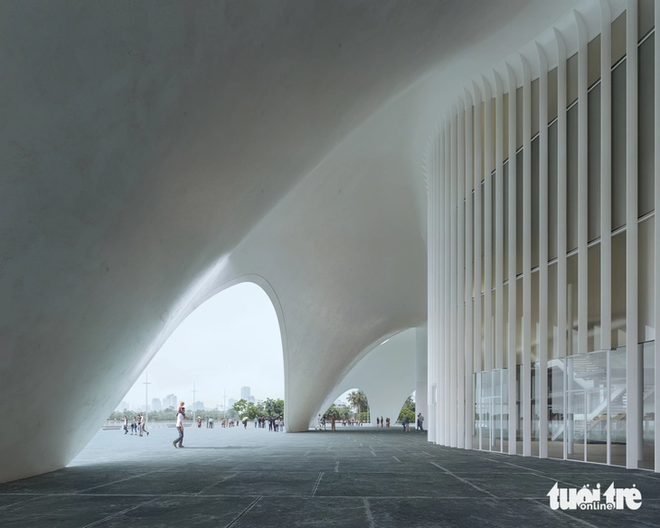
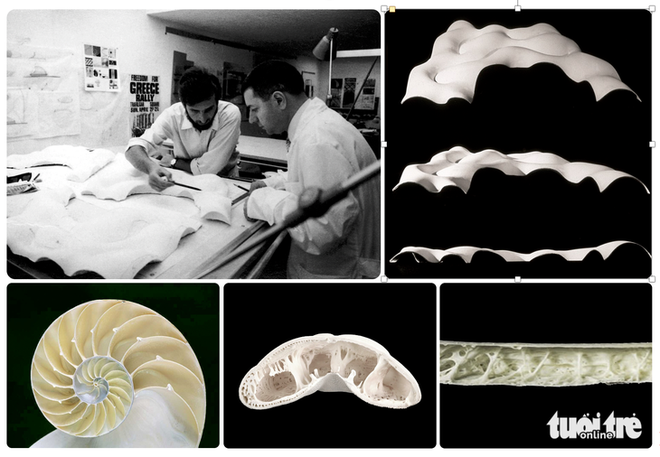
The dome of the Hanoi Opera House is inspired by the rippling waves of West Lake in Hanoi.
West Lake will also feature eight boat piers and a water tourism route, including one pier located near the opera house, offering convenient access to locals and tourists to this new cultural landmark.
The Hanoi Opera House is expected to be completed in 2027.


Max: 1500 characters
There are no comments yet. Be the first to comment.